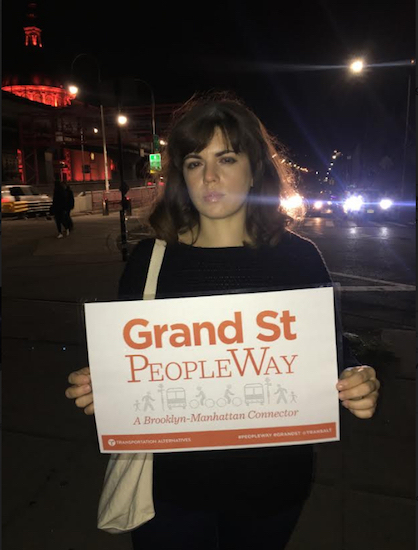L Train Shutdown: Brooklyn cyclists demand Grand Street ‘PeopleWay’
Grand Street Is One of the Area’s Most Dangerous Streets, According to TA

A cyclist who lost a friend to a hit-and-run driver on Grand Street holds up a poster. Eagle photo by Scott Enman
With the L-train shutdown looming on the horizon, and with no concrete alternative transportation options in place, one group of activists is proposing a plan that would absorb thousands of affected L-train riders during the 2019 closure.
The proposal, dubbed The Grand Street PeopleWay, would create a safer, more efficient Grand Street by outlawing vehicular traffic and by prioritizing bike, pedestrian and bus travel along the 1.8-mile North Brooklyn corridor.
The idea for the PeopleWay comes from Transportation Alternatives (TA), a transit advocacy nonprofit that has been supporting cyclists, pedestrians and transit users in New York City for more than 40 years.
